Introduction to computing with Message Passing Interface (MPI)
Oslo - 12/9 2023
Professor Mikael Mortensen
Department of Mathematics
University of Oslo
Why MPI?
The only way to simulate extremely large models that can capture extremely complex real-life physics!
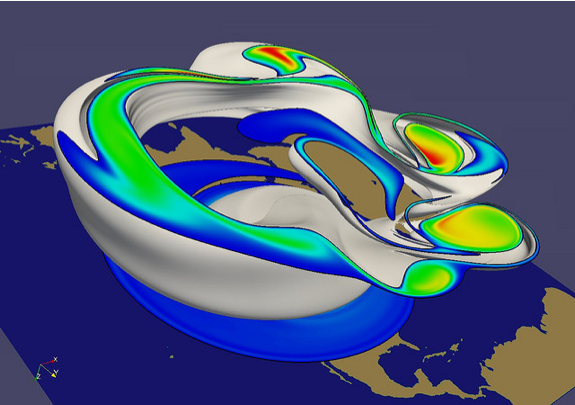
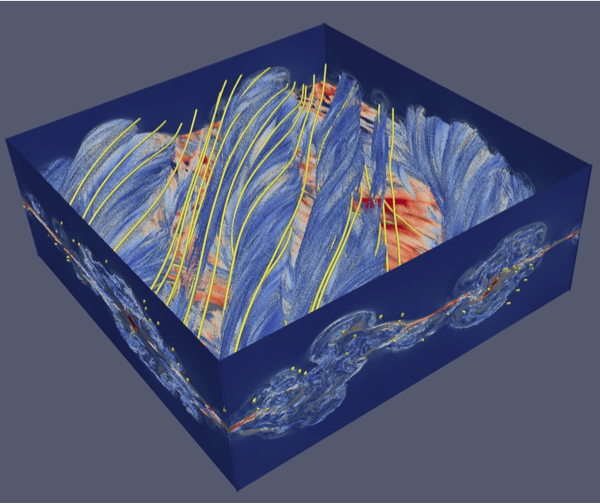
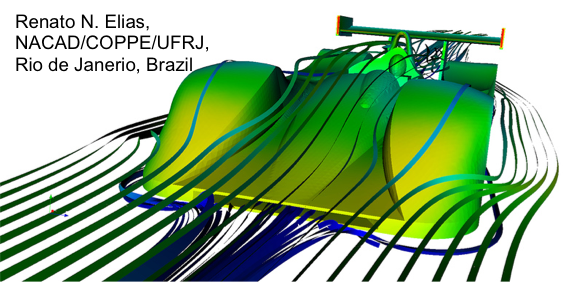

Shaheen II - 196,000 cores
What is MPI?
MPI defines a standard interface for communication between processors.
A single MPI parallel program is executed on several processors simultaneously. Each process is assigned different jobs within the same program.
There are several competing implementations of MPI
OpenMPI, MPICH, IntelMPI, ...
The processors do not share the same memory (distributed memory).
MPI basics
communicator1
Communicators are defined for groups of processes that have the ability to communicate with one another






communicator2
No communication across
COMM_WORLD
COMM_WORLD
The COMM_WORLD communicator is designed to communicate between all processors






Communicator rank
COMM_WORLD
Each processor in a communicator group has a unique rank






rank 4
rank 0
rank 1
rank 2
rank 3
rank 5
Rank is local to communicator
communicator1






communicator2
No communication across
rank 0
rank 1
rank 0
rank 3
rank 2
rank 1
The Communicators job is to send and receive information between ranks

x=10
x=?For example - a program computes a variable x on rank 0 and sends the result to rank 1
rank 0
rank 1
comm.send(x, dest=1)
x = comm.recv(source=0)
comm
MPI is implemented in C with bindings in many languages
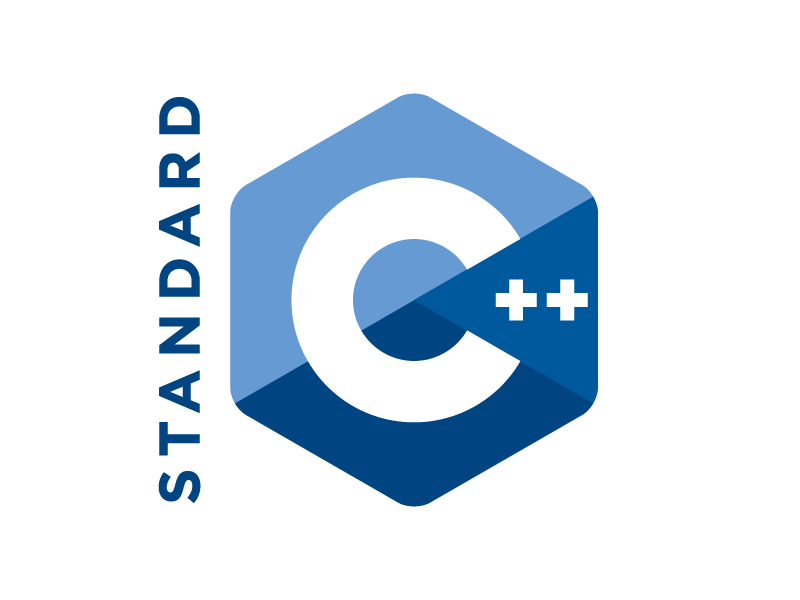
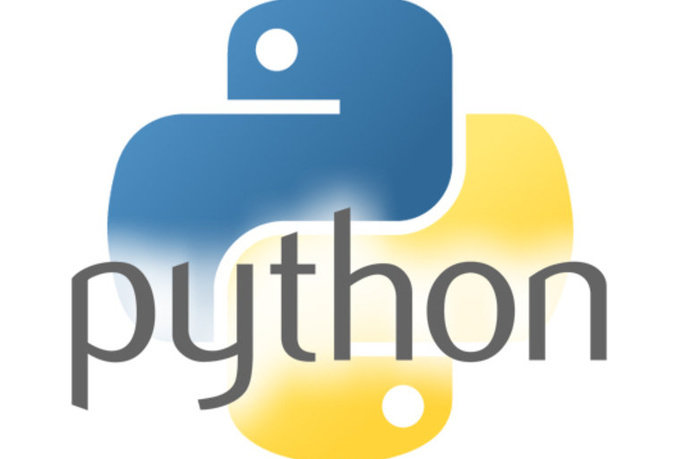
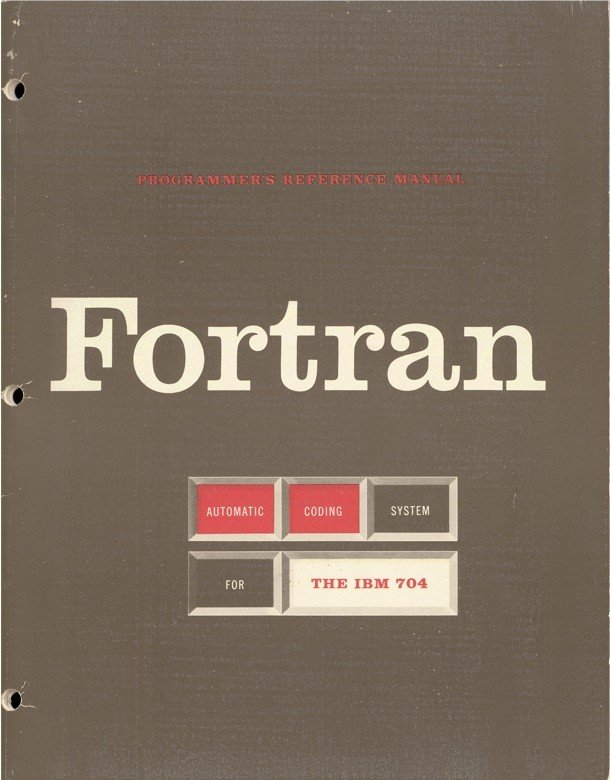


Hello world! Fortran90
program hello_world
! Include the MPI library definitons:
include 'mpif.h'
integer numtasks, rank, ierr, rc, len, i
! Initialize the MPI environment
call MPI_INIT(ierr)
! Get the number of processors
call MPI_COMM_SIZE(MPI_COMM_WORLD, numtasks, ierr)
! Get the rank of the process
call MPI_COMM_RANK(MPI_COMM_WORLD, rank, ierr)
print "('Hello World! from rank ',I3,' of ',I3,' processors')",&
rank, numtasks
! Finalize the MPI environment
call MPI_FINALIZE(ierr)
end program hello_worldhelloworld.f90:
>>> mpif90 helloworld.f90 -o helloworld
>>> mpirun -np 4 helloworld
Hello world! from rank 3 of 4 processors
Hello world! from rank 1 of 4 processors
Hello world! from rank 2 of 4 processors
Hello world! from rank 0 of 4 processors
Compile and run
Hello world! C++
#include <mpi.h>
int main(int argc, char** argv) {
// Initialize the MPI environment
MPI_Init(NULL, NULL);
// Get the number of processes
int world_size;
MPI_Comm_size(MPI_COMM_WORLD, &world_size);
// Get the rank of the process
int world_rank;
MPI_Comm_rank(MPI_COMM_WORLD, &world_rank);
printf("Hello world! from rank %d"
" out of %d processors\n",
world_rank, world_size);
// Finalize the MPI environment.
MPI_Finalize();
}helloworld.cpp:
>>> mpic++ -o helloworldcpp helloworld.cpp
>>> mpirun -np 4 helloworldcpp
Hello world! from rank 1 out of 4 processors
Hello world! from rank 3 out of 4 processors
Hello world! from rank 0 out of 4 processors
Hello world! from rank 2 out of 4 processorsCompile and run
Compiler wrappers
- There are no direct MPI compilers
- MPI compiler wrappers add the appropriate compiler and linker flags and call the compiler and linker
C - mpicc - gcc
C++ - mpic++, mpicxx, mpiCC - g++
Fortran90 - mpif90 - gfortran
Fortran77 - mpif77 - gfortran
mpirun to execute the parallel program
>>> mpirun -np 4 helloworldcpp >>> mpic++ -o helloworldcpp helloworld.cpp Hello world!
Python (mpi4py)
from mpi4py import MPI
comm = MPI.COMM_WORLD
print("Hello world! from", comm.Get_rank(), "of", comm.Get_size(), "processors")>>> mpirun -np 4 python helloworld.py
Hello world! from rank 3 of 4 processors
Hello world! from rank 1 of 4 processors
Hello world! from rank 2 of 4 processors
Hello world! from rank 0 of 4 processors
Python script helloworld.py:
Run in a terminal (no compilation):
Python
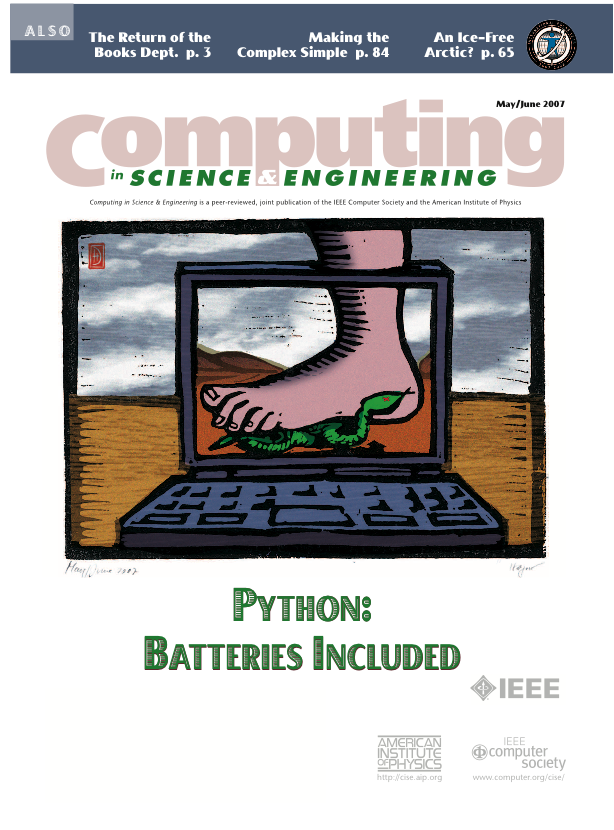
- Free Open Source
- The worlds most popular language
- Scripting language, similar syntax to MATLAB
- Complete language. Used extensively by systems and web developers.
- Very high level of abstraction.
- Truly simple interfaces to a range of toolboxes (batteries included)
- MPI
- LAPACK, BLAS, FFTW
mpi4py
mpi4py (https://bitbucket.org/mpi4py) implements Python interfaces to almost the entire MPI
MPI through mpi4py is as fast as pure C
Very high level of abstraction makes it ideal for learning basic MPI:-)
Point to point communication
- Send
- Recv
- Sendrecv
Sending and receiving
from mpi4py import MPI
comm = MPI.COMM_WORLD
assert comm.Get_size() == 2 # Check that only 2 cpus are used
rank = comm.Get_rank()
sendmessage = "from " + str(rank) # Create a unique message
# Send and receive messages
comm.send(sendmessage, dest=(rank+1)%2) # % is the modulo operator
rcvmessage = comm.recv(source=(rank+1)%2)
print("Rank", rank, "received the message '", rcvmessage, "'")>>> mpirun -np 2 python ping.py
Rank 1 received the message ' from 0 '
Rank 0 received the message ' from 1 '
Script "ping.py":
Run script with 2 processors:
The most fundamental part of MPI is the Sending and Receiving of messages (data)
Example:
Rank 0 sends the string "from 0" to rank 1
Rank 1 sends the string "from 1" to rank 0
At the same time
Rank 1 receives the string "from 0" from rank 0
Rank 0 receives the string "from 1" from rank 1
Send, Recv arrays
Alternatively send and receive a data array of some size
from mpi4py import MPI
comm = MPI.COMM_WORLD
assert comm.Get_size() == 2
import numpy as np # numpy module for doing math with arrays in Python
import sys # sys module used here for handling input parameter
rank = comm.Get_rank()
N = eval(sys.argv[-1]) # Get the last argument in the call to program
sendarray = np.random.random(N)# Create N random floats
recvarray = np.zeros(N)
comm.Send(sendarray, dest=(rank+1)%2) # Large S in Send for numpy arrays
comm.Recv(recvarray, source=(rank+1)%2) # Large R in Recv for numpy arrays
print("Rank", rank, "sent the array ", sendarray)
print("Rank", rank, "received the array", recvarray)>>> mpirun -np 2 python ping_array.py 4
Rank 0 sent the array [ 0.44237578 0.31677064 0.01413777 0.71446391]
Rank 1 sent the array [ 0.45921672 0.44309542 0.47930141 0.20993437]
Rank 1 received the array [ 0.44237578 0.31677064 0.01413777 0.71446391]
Rank 0 received the array [ 0.45921672 0.44309542 0.47930141 0.20993437]
Script "ping_array.py":
Run script with 2 processors and N=4:
Send, Recv 2D arrays
Alternatively send and receive a multi-dimensional data array
from mpi4py import MPI
comm = MPI.COMM_WORLD
assert comm.Get_size() == 2
import numpy as np
import sys
rank = comm.Get_rank()
N = eval(sys.argv[-2]) # Get the two commandline arguments
M = eval(sys.argv[-1])
sendarray = np.random.random((N, M)) # Create 2D array of random floats
recvarray = np.zeros((N, M))
comm.Send(sendarray, dest=(rank+1)%2) # Same call as for 1D arrays!
comm.Recv(recvarray, source=(rank+1)%2)
print("Rank", rank, "sent the array ", sendarray)
print("Rank", rank, "received the array", recvarray)>>> mpirun -np 2 python ping_array.py 2 2
Rank 1 sent the array [[ 0.13015624 0.83936722]
[ 0.20446479 0.73219369]]
Rank 0 sent the array [[ 0.0959189 0.29652745]
[ 0.96000297 0.97902768]]
Rank 1 received the array [[ 0.0959189 0.29652745]
[ 0.96000297 0.97902768]]
Rank 0 received the array [[ 0.13015624 0.83936722]
[ 0.20446479 0.73219369]]
Script "ping_array2D.py":
Run script with 2 processors and N=2, M=2:
Ping Pong

Rank 0
Rank 1
count
Two players ranked as number 0 and 1
- Rank 0 counts 1 and sends the ball to rank 1
- Rank 1 counts 2 and sends the ball to rank 0
- Rank 0 counts 3 and sends the ball to rank 1
- Rank 1 counts 4 and sends the ball to rank 0
- Rank 0 counts 5 and sends the ball to rank 1
- Rank 1 misses!
Ping Pong
mpirun -np 2 python pingpong.py
Rank 0 counts 1 and sends the ball to rank 1
Rank 1 counts 2 and sends the ball to rank 0
Rank 0 counts 3 and sends the ball to rank 1
Rank 1 counts 4 and sends the ball to rank 0
Rank 0 counts 5 and sends the ball to rank 1
Rank 1 misses!from mpi4py import MPI
comm = MPI.COMM_WORLD
assert comm.Get_size() == 2
rank = comm.Get_rank()
count = 0
while count < 5:
if rank == count%2:
count += 1
comm.send(count, dest=(rank+1)%2)
print("Rank", rank, "counts", count, "and sends the ball to rank", (rank+1)%2)
elif rank == (count+1)%2:
count = comm.recv(source=(rank+1)%2)
comm.barrier()
if rank == 1: print("Rank 1 misses!") pingpong.py
Execute program simultaneously on 2 processors
mpirun -np 2 python pingpong.pyCollective operations
- Broadcast
- Reduce
- Scatter
- Gather
- Allgather
- Alltoall
Broadcast
During a broadcast, one process sends the same data to all processes in a communicator.
from mpi4py import MPI
comm = MPI.COMM_WORLD
rank = comm.Get_rank()
message = None
if rank == 0:
message = "Hi!"
message = comm.bcast(message, root=0)
if rank > 0:
print("Rank 0 says", message, "to rank", rank)
>>> mpirun -np 4 python bcast.py
Rank 0 says Hi! to rank 1
Rank 0 says Hi! to rank 2
Rank 0 says Hi! to rank 3
bcast.py
>>> mpirun -np 4 python bcast.py
Example:
Rank 0 sends the string "Hi!" to all processes
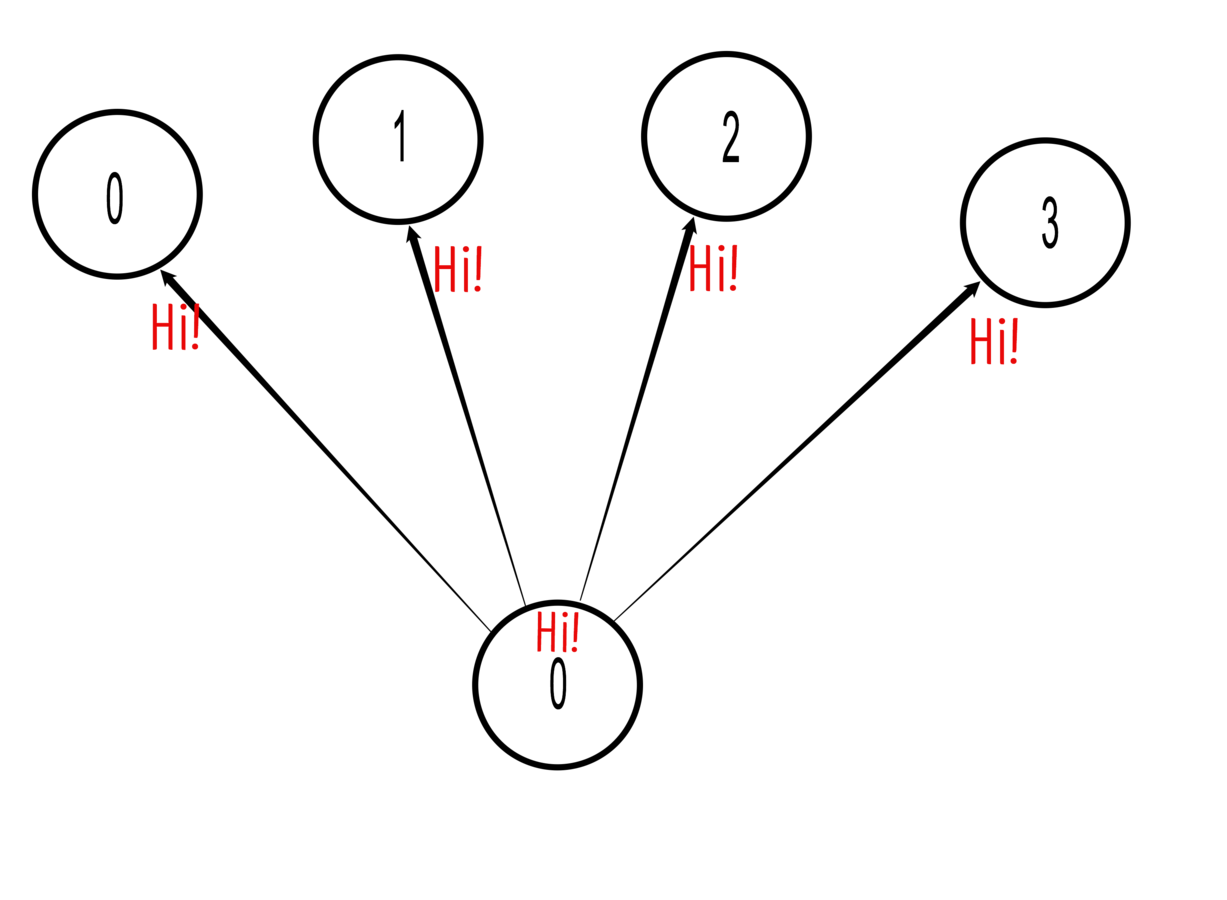
Reduce
Data reduction by reducing a set of numbers into a smaller set of numbers via a function
from mpi4py import MPI
comm = MPI.COMM_WORLD
rank = comm.Get_rank()
data = rank
data = comm.reduce(data, op=MPI.SUM, root=0) # MPI.PROD, MPI.MAX, MPI.MIN, ...
print("On rank", rank,"data =", data)>>> mpirun -np 4 python reduce.py
On rank 2 data = None
On rank 3 data = None
On rank 1 data = None
On rank 0 data = 6
reduce.py
>>> mpirun -np 4 python reduce.py
Example:
Set variable data equal to rank on all processes and reduce on rank 0 with sum
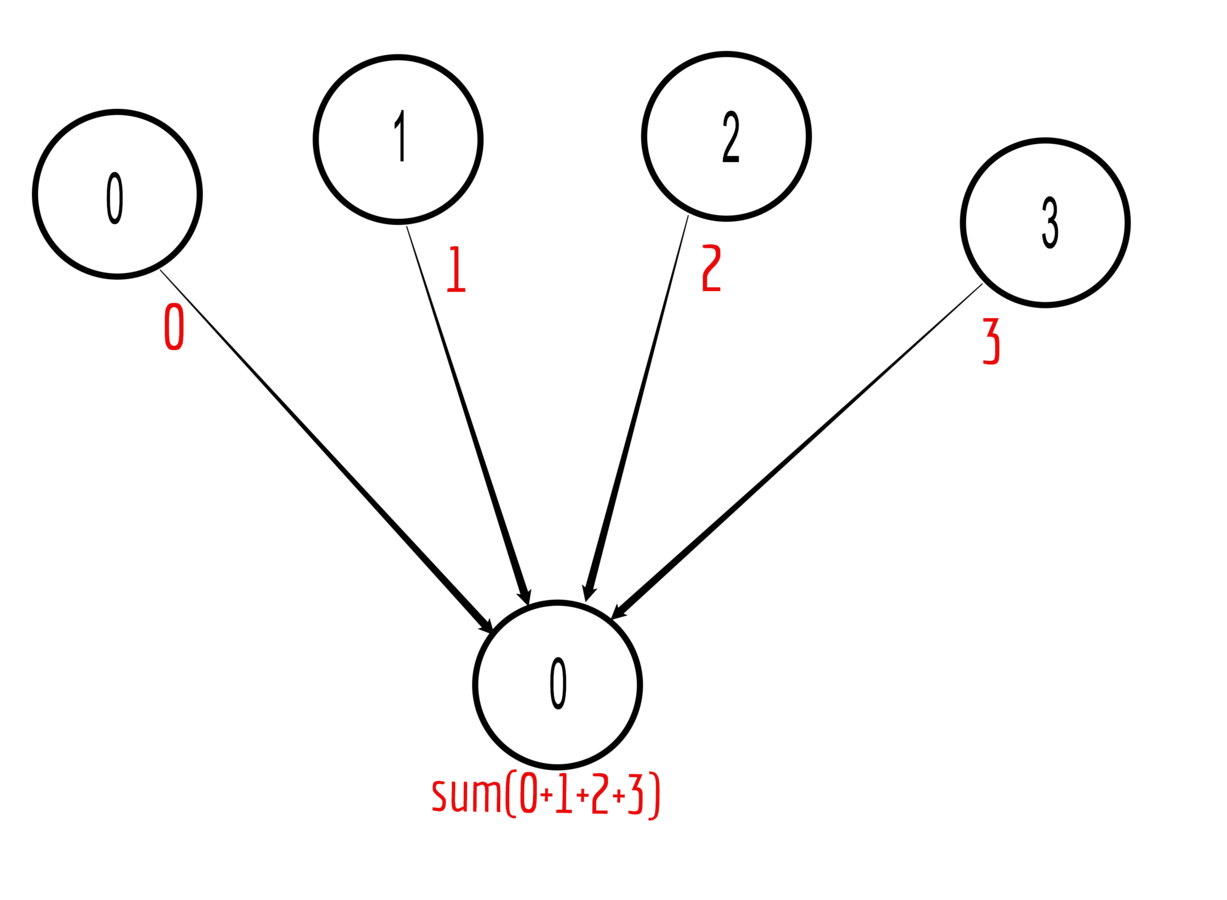
Scatter
One process sends different data to all the ranks
mpirun -np 4 python scatter.py
Rank 0 data = 0
Rank 1 data = 1
Rank 2 data = 4
Rank 3 data = 9
from mpi4py import MPI
comm = MPI.COMM_WORLD
rank = comm.Get_rank()
data = None
if rank == 0:
data = [0, 1, 4, 9]
data = comm.scatter(data, root=0)
print("Rank", rank, "data =", data)
scatter.py
Example with 4 ranks:
set data = [0, 1, 4, 9] on rank 0
Send data[i] to rank i, for i = 0, 1, 2, 3
mpirun -np 4 python scatter.py
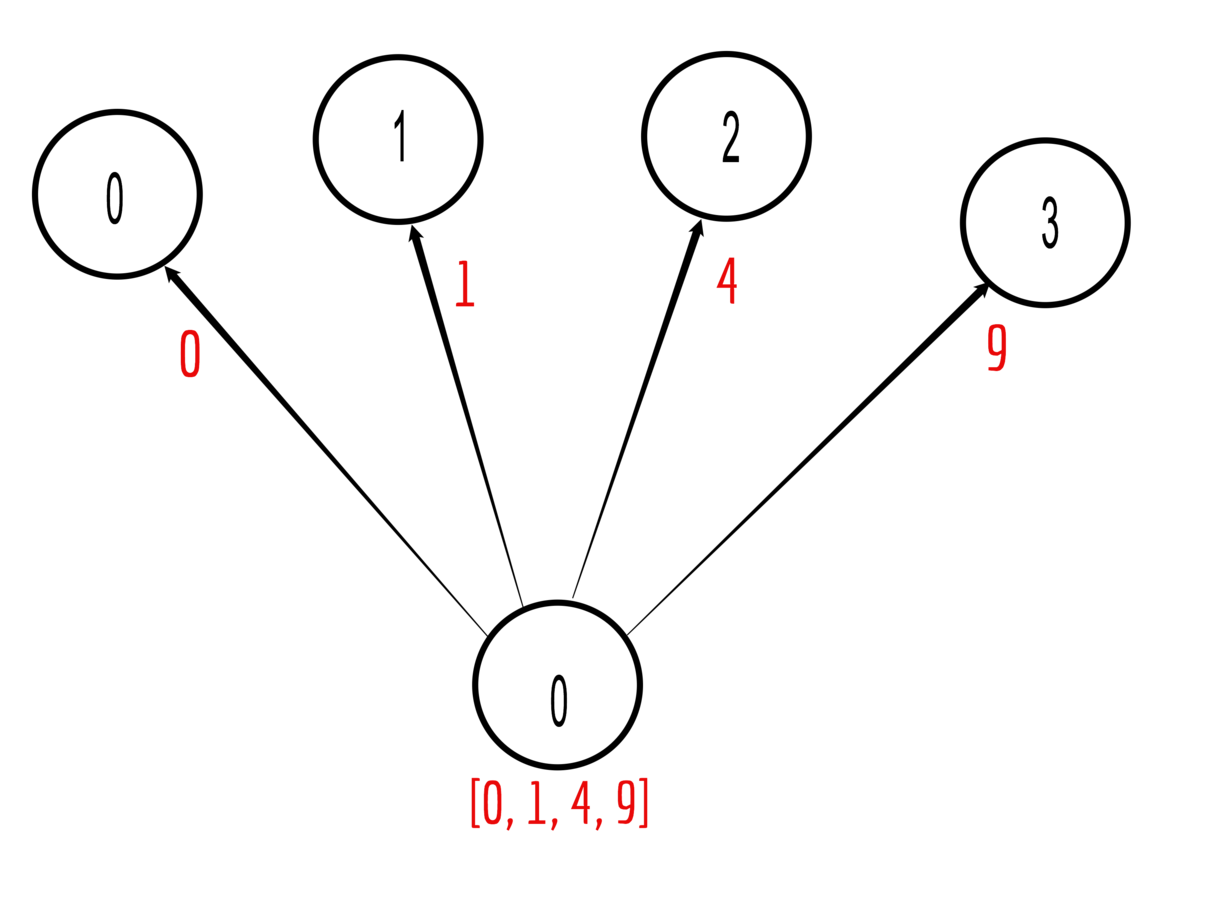
Gather
Gather is the inverse of scatter
Gather data from all processors on one designated rank
>>> mpirun -np 4 python gather.py
On rank 1 data = None
On rank 2 data = None
On rank 3 data = None
On rank 0 data = [0, 1, 4, 9]
from mpi4py import MPI
comm = MPI.COMM_WORLD
rank = comm.Get_rank()
data = rank**2
data = comm.gather(data, root=0)
print("On rank", rank,"data =", data)
gather.py
>>> mpirun -np 4 python gather.py
Example with 4 ranks:
Set data = rank^2 on all ranks
Gather on rank = 0
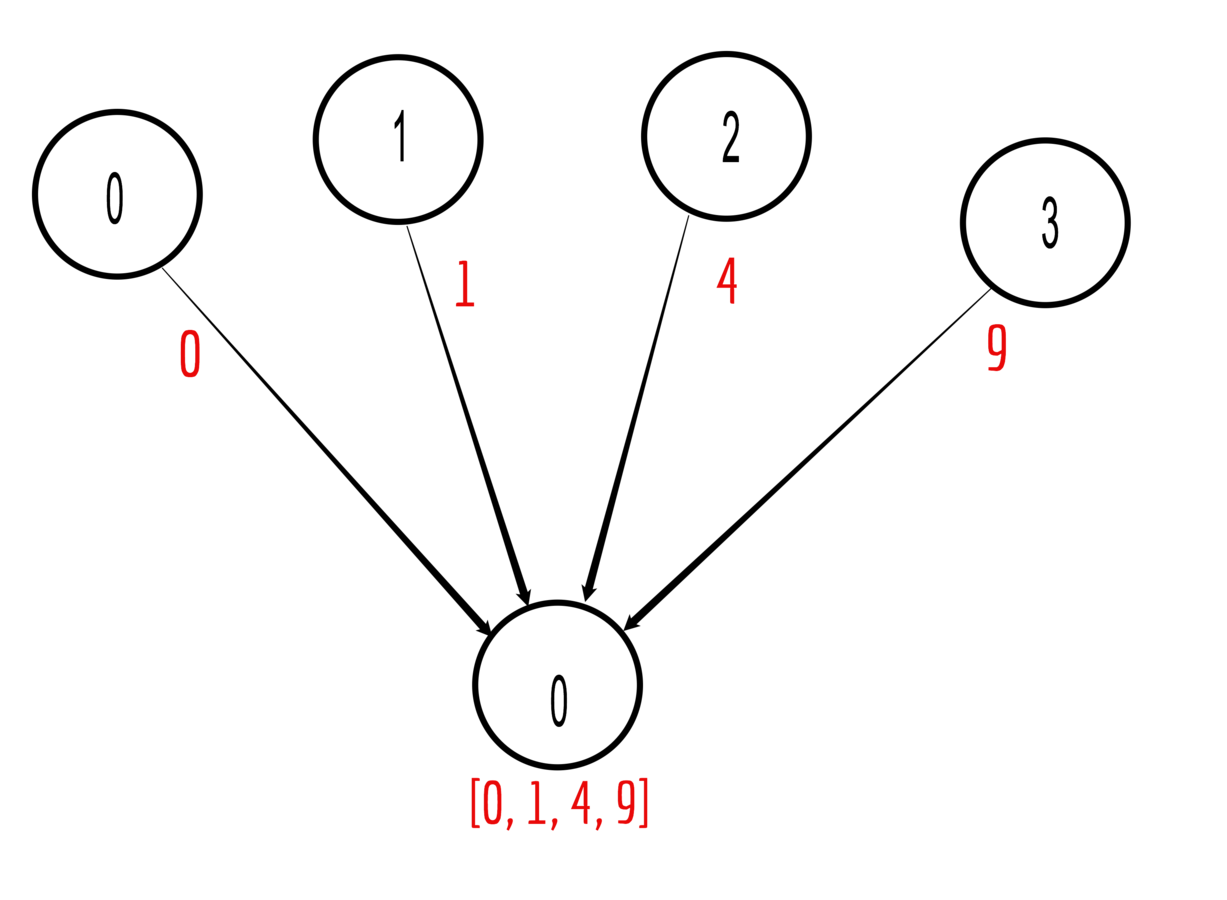
Allgather
Gather data from all processors (like normal gather), but broadcast result to all ranks
>>> mpirun -np 4 python allgather.py
On rank 0 data = [0, 1, 4, 9]
On rank 1 data = [0, 1, 4, 9]
On rank 2 data = [0, 1, 4, 9]
On rank 3 data = [0, 1, 4, 9]
from mpi4py import MPI
comm = MPI.COMM_WORLD
rank = comm.Get_rank()
data = rank**2
data = comm.allgather(data)
print("On rank", rank, "data =", data)
allgather.py
Alltoall
All ranks sends and receives data to and from all other ranks in communicator
>>> mpirun -np 4 python alltoall.py
On rank 0 data = [0, 0, 0, 0]
On rank 1 data = [1, 1, 1, 1]
On rank 2 data = [2, 2, 2, 2]
On rank 3 data = [3, 3, 3, 3]
from mpi4py import MPI
comm = MPI.COMM_WORLD
rank = comm.Get_rank()
data = range(comm.Get_size()) # [0, 1, 2, ..., size]
data = comm.alltoall(data)
print("On rank", rank,"data =", data)
alltoall.py
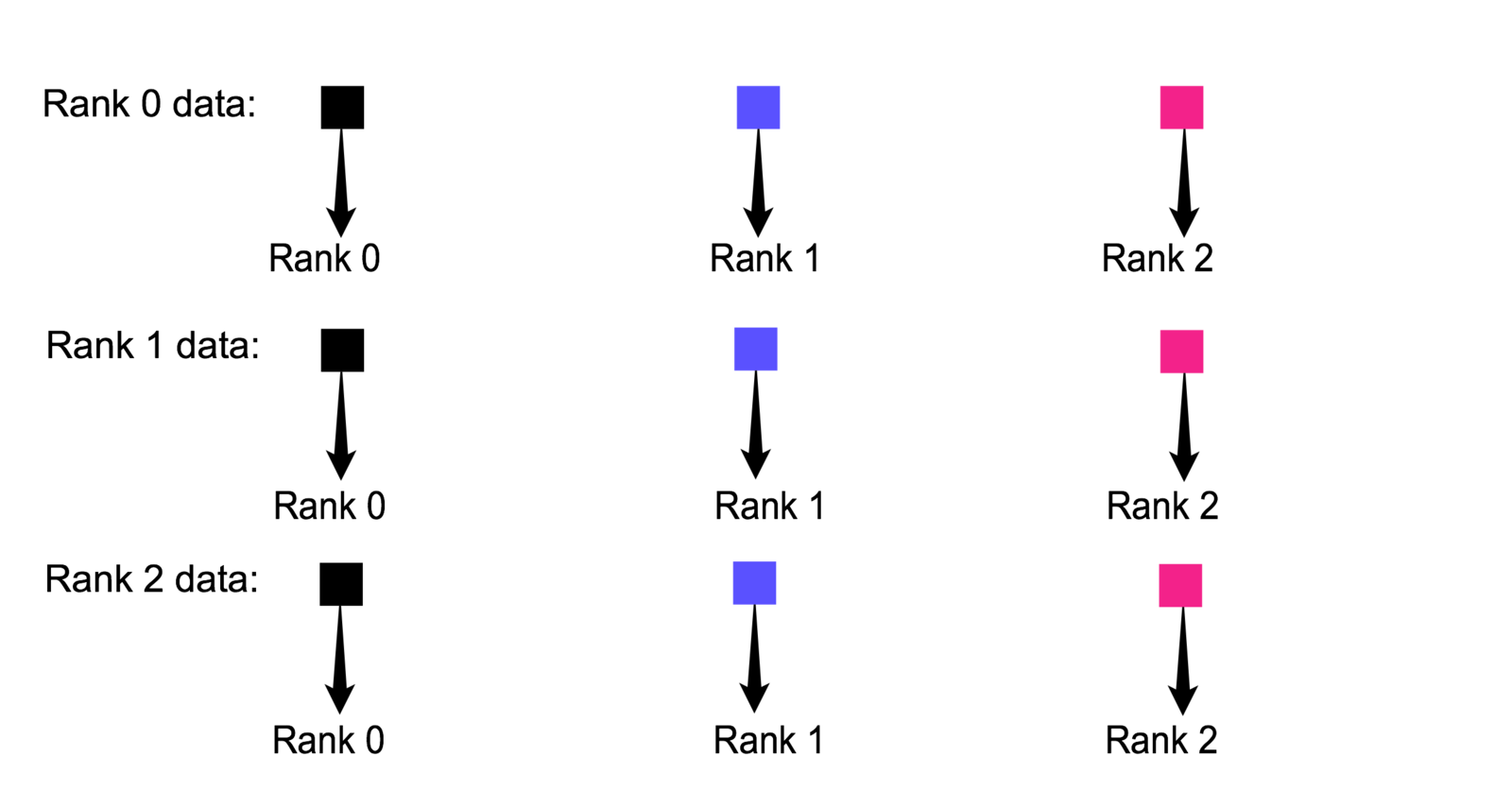
Scientific applications
How is MPI used in scientific computing?
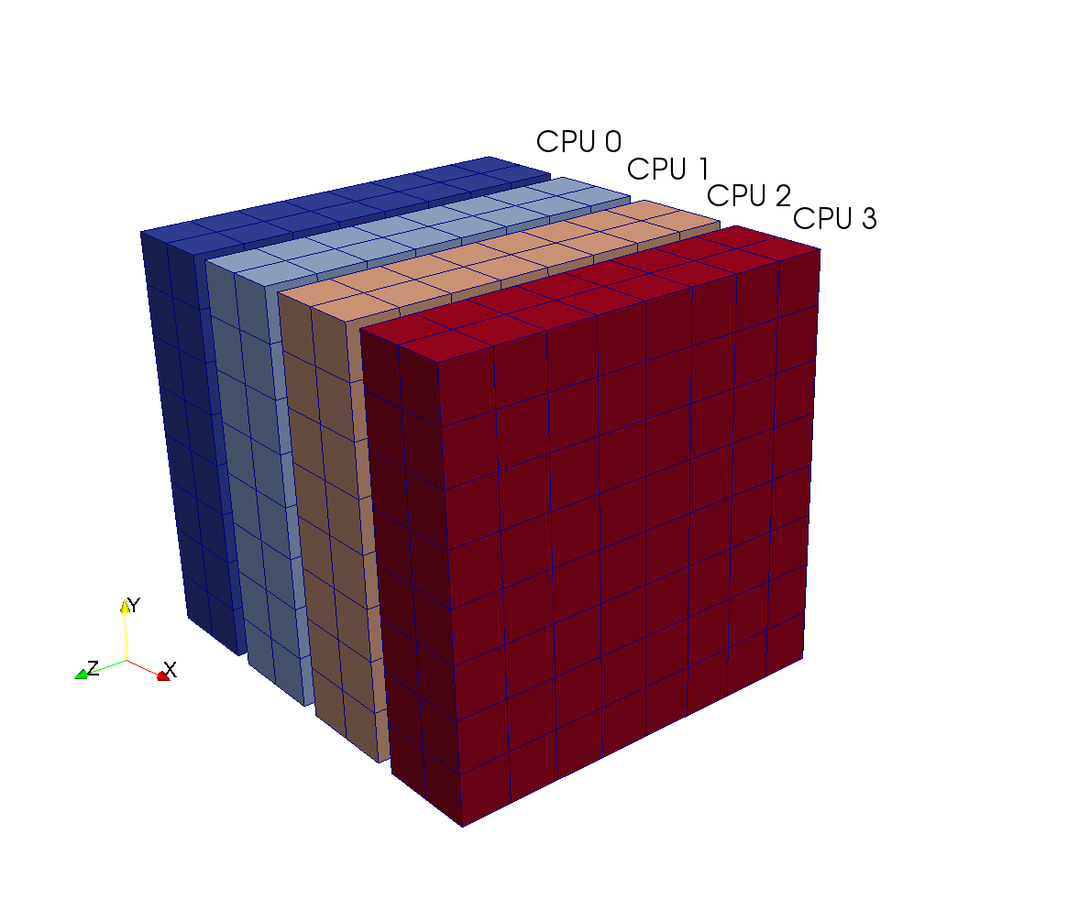
- A large global mesh is distributed amongst processors
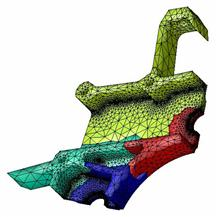
Worked example
Trapezoidal integration
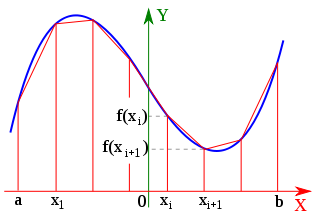
- Use MPI and create a program to integrate any function using the trapezoidal rule
- Verify with exact solution using Python module sympy
Step 1
Mesh decomposition
Divide the interval between processors
rank = comm.Get_rank()
size = comm.Get_size()
a = 0.0
b = 1.0
N = eval(sys.argv[-1]) # Number of subdivisions for each rank
dx = (b-a)/size
a_hat, b_hat = rank*dx, (rank+1)*dx
xj = np.linspace(a_hat, b_hat, N+1) # Mesh in rank's subdivision
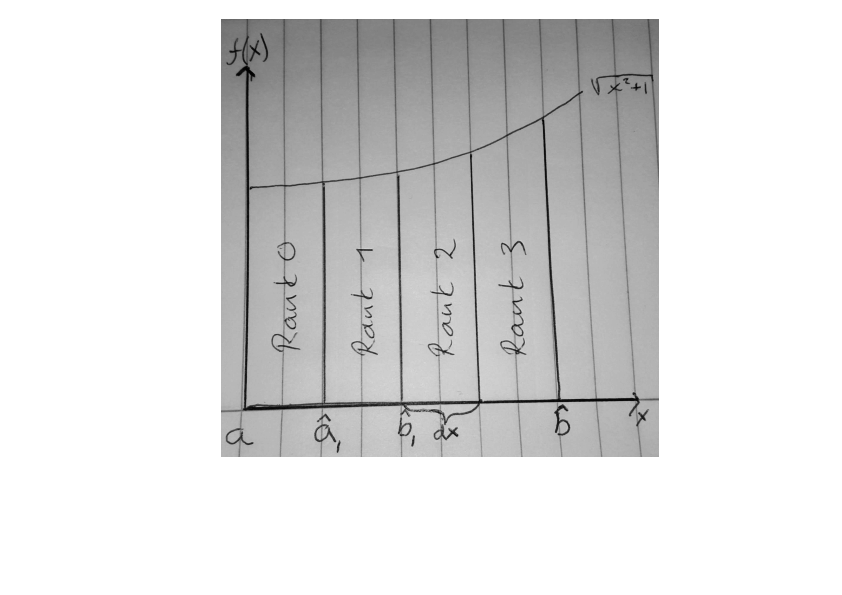
Step 2
Define function
import numpy as np
def f(x):
return np.sqrt(x**2+1) # Regular Python function
f = lambda x: np.sqrt(x**2+1) # Lambda function
import sympy
x = sympy.Symbol('x')
f = sympy.sqrt(x**2+1) # Symbolic function (for exact integration)There are many ways of defining a function in Python:
Choose function
Step 3
Compute the integral
For each rank j compute
fj = [f(y) for y in xj] # or [f.subs(x, y) for y in xj] for sympy function
Ij = (b_hat-a_hat)/float(N)*(0.5*(fj[0]+fj[-1])+sum(fj[1:-1]))
I = comm.reduce(Ij) # Sum all contributions on rank 0
Compute total integral using MPI reduce function
Trapezoidal integration
of sympy function through commandline
from mpi4py import MPI
comm = MPI.COMM_WORLD
import sys
import numpy as np
import sympy
x = sympy.Symbol("x")
f = eval(sys.argv[-1])
rank = comm.Get_rank()
size = comm.Get_size()
a, b = 0.0, 1.0
N = eval(sys.argv[-2]) # Number of subdivisions for each rank
dx = (b-a)/size
a_hat = rank*dx
b_hat = (rank+1)*dx
xj = np.linspace(a_hat, b_hat, N+1)
fj = [f.subs(x, y) for y in xj]
Ij = (b_hat-a_hat)/float(N)*(0.5*(fj[0]+fj[-1])+sum(fj[1:-1]))
I = comm.reduce(Ij)
if rank == 0:
print("Integral of f(x) from ", a, "to", b, "is ≈", I)
print("Exact = ", f.integrate((x, (a, b))).evalf())
>>> mpirun -np 8 python trapz.py 10 'sympy.sqrt(x**2+1)'
Integral of f(x) from 0.0 to 1.0 is ≈ 1.14780278183385
Exact = 1.14779357469632
Exercise 1
Compute the value of
Use MPI programming and Monte Carlo integration to compute the value of
How many particles are required for 4 digits accuracy?
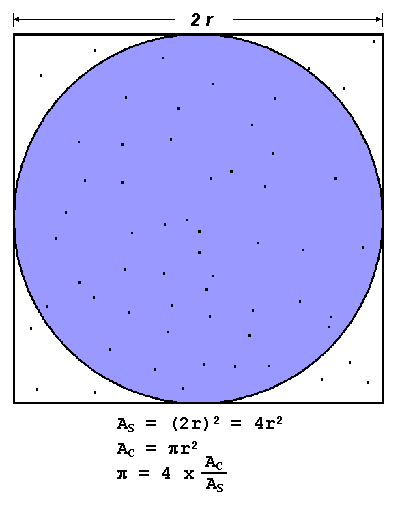
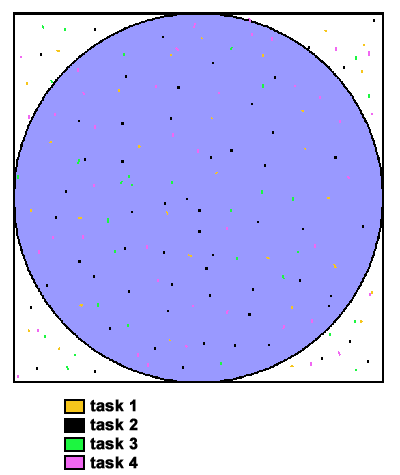
Exercise 2
Integration using Simpson's rule
- Modify trapz.py to use the composite Simpson's rule instead of the trapezoidal rule.
- Modify the code to work with any interval size of the decomposed mesh, not just uniform.
Exercise 3
Ring send and receive
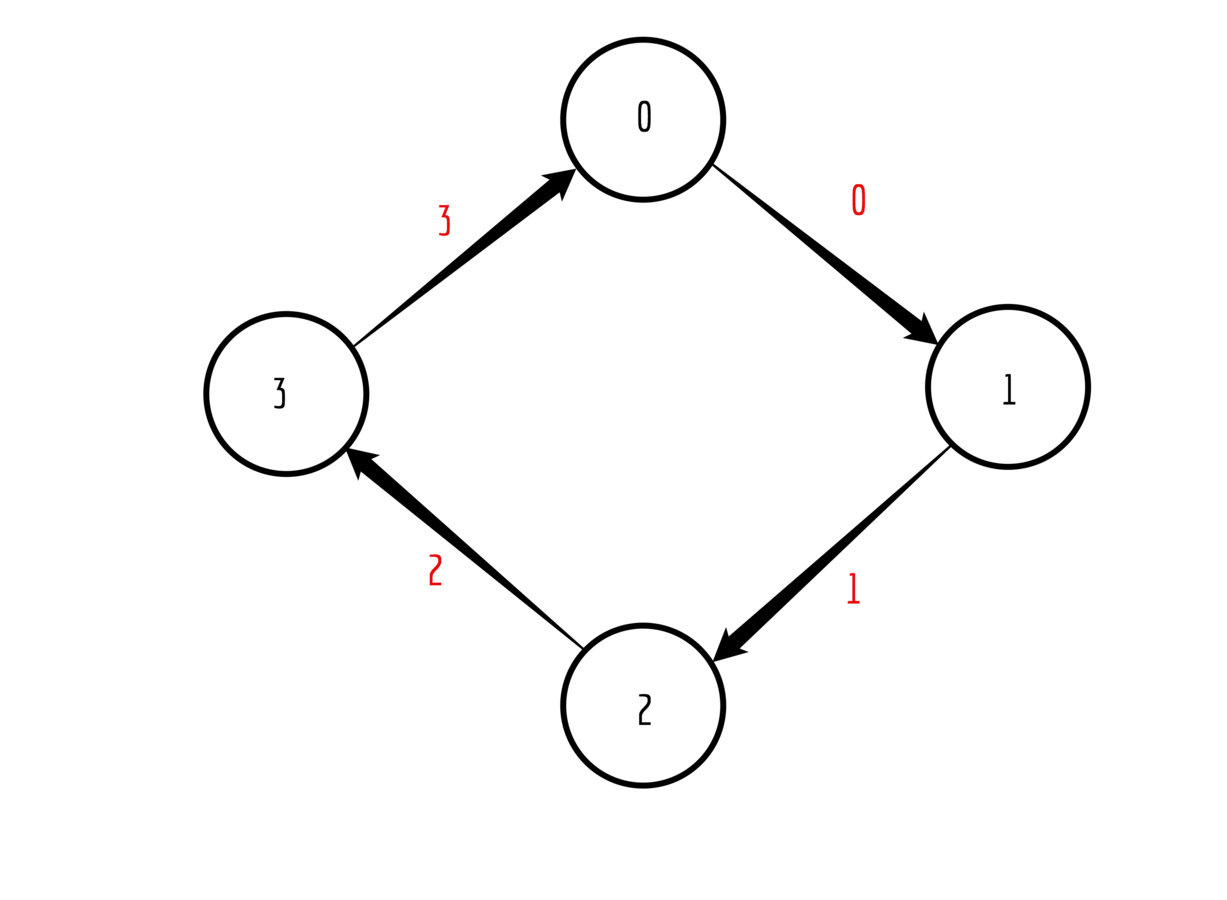
Each rank starts by sending the value of its rank to the closest neighbour on the right, i.e., (rank+1)%(number of ranks)
Pass on the received value to the next neighbour
Keep track of the sum of all received values
Stop when receiving your own rank
Print out the accumulated sum
First step
Exercise 4
Matrix vector product
- Given a global matrix A[N, N] and a vector x[N]
- Compute the matrix vector product through MPI by distributing the matrix such that its local size on each rank is A[Np, N], where Np = N/(Number of ranks)
- Verify the result by comparing to a serial code
mpi-intro
By Mikael Mortensen
mpi-intro
- 790



